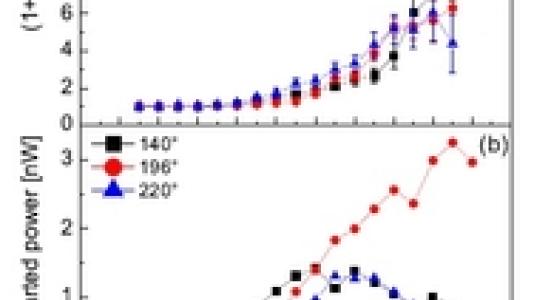
Nanopillars consisting of two magnetic layers separated by an insulating or non-magnetic metal can exhibit oscillations: a constant current can make the magnetization in one layer precess with frequencies in the gigahertz range.
The physics behind this is the so-called spin torque effect through which conduction electrons transfer angular momentum to the magnetization in a layer. If the current is adjusted such that the angular momentum transfer rate to the magnetization in the second magnetic layer is precisely balanced by the loss of angular momentum due to dissipation in the magnetic layer, the oscillations become very precise and long-lived. Such “spin torque oscillators” are very interesting in terms of application since they convert a dc current to gigahertz oscillations and can be readily integrated with other electronics.
A fundamental, pertinent question is how long the oscillations can be maintained without becoming imprecise (the coherence time). Researchers at Argonne National Laboratory and the University of Gothenburg, Sweden, and the Royal Institute of Technology, Sweden have shown that the coherence time depends on the relative orientation of the magnetization in the two magnetic layers, and is longest when the magnetizations in the two layers are arranged to be antiparallel.
Measurements show that the oscillator switches frequency as a function of time. This mode-hopping is an important process that limits the coherence away from antiparallel orientation. Near antiparallel orientation, the hopping can be reduced to be unimportant by carefully tuning the current. A theoretical analysis shows that the mechanism governing the mode-hopping is very similar to the mechanism for semiconductor lasers. The mode-hopping arises from fundamental and intrinsic interactions in the nanomagnets, and the understanding and analogy with semiconductor ring lasers is an important step towards applications of spin torque oscillators.
P. K. Muduli, O. Heinonen, and J. Åkerman, Decoherence and Mode Hopping in a Magnetic Tunnel Junction Based Spin Torque Oscillator. DOI: 10.1103/PhysRevLett.108.207203